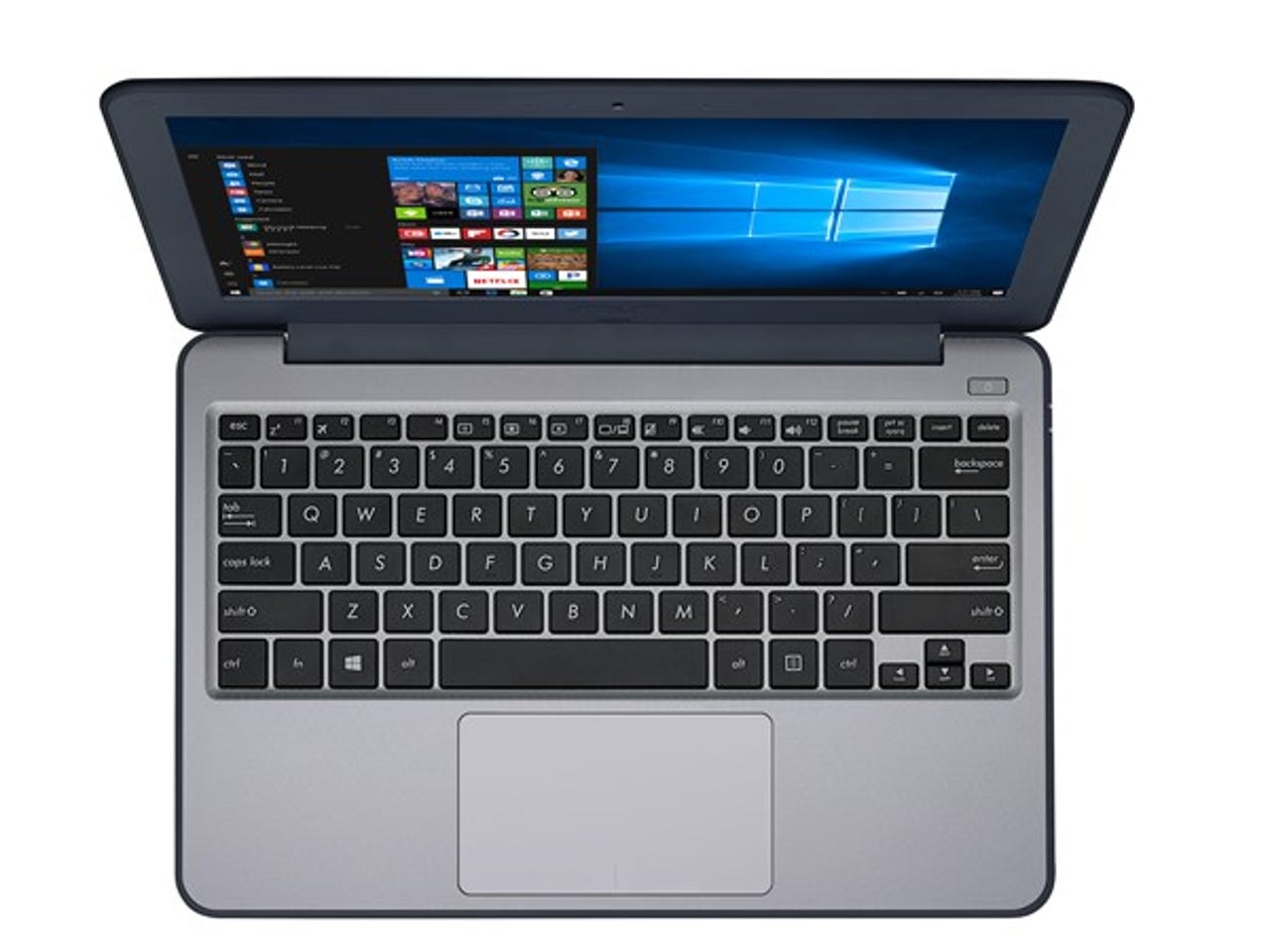Hands on: Asus E201 VivoBook with Windows 10S


The Asus E201 is a solid 11.6-inch Windows 10S laptop with a good multi-touch trackpad and a decent spill-resistant keyboard, though some may not like the position of the backslash key.
The most attractive thing about the Asus E201 VivoBook - a robust 11.6-inch Windows 10S laptop - is that you can upgrade it to Windows 10 Pro. I wanted to try a laptop running 10S to see if I could survive without traditional Windows programs, and the answer is yes, but not for long. For serious users, it has the same hobbling feeling as a Chromebook, though it's not as bad, because at least you can run Microsoft Office. However, as with Chromebooks, the drawbacks of Windows 10S can become advantages for school children, for inexperienced users, and perhaps for some corporate purposes, if in-house apps have been developed for specific tasks.
Windows 10S is a version of Windows that will only run apps from the Windows Store. It blocks users from installing traditional applications from the web: they are a source of risk. There's nothing wrong with that in principle, but there are two problems for typical Windows users. First, you can't run either the high-end applications or the familiar utilities that you've relied on for years. Second, the Windows Store doesn't have nearly enough good quality apps. (No, this is not news, but after five years, there really should be more.)
However, it would not be correct to say that Windows 10S cannot run traditional Win32 programs. It can. There are plenty of them built into Windows 10S.
After going through the 10S's delightful voice-based set-up, I was immediately productive with the Asus E201 because it still includes Notepad and Wordpad. These aged programs were not on the Windows 10S Start menu and there were no tiles for them, but they still ran perfectly well. And because the new Settings app doesn't offer all the controls you might want, the old Control Panel program and other utilities still run as well. Again, these are desktop programs written for the old Win32 API, not the new Windows Runtime introduced for apps in Windows 8.
There should come a day when every Windows utility is available in app form. This will enable Microsoft to strip out the whole Win32 subsystem, leaving behind a smaller, faster, safer, touch-aware version of Windows for schoolchildren and general consumers. I might bet on it happening some time this century, but it doesn't look close at the moment. Best, then, to think of Windows 10S as a sighting shot or a staging post for that glorious future.
Before anyone has a fit, I don't anticipate Microsoft removing Win32 from Pro and Enterprise versions of Windows. Businesses have entrenched software, and professional users have entrenched habits. Backwards compatibility of applications, data and business processes is still what keeps Microsoft in business.
Solid hardware
Apart from that, I enjoyed using the Asus E201. It is a very solid, spill-resistant machine designed to take the kind of punishment that laptops suffer in schools. The textured finish feels good and might make you less likely to drop it, though it does still show fingerprints.
While the E201 is reasonably light at 1.2kg, it's not very thin at 2.25cm (0.9 inches), because other things are more important. These include reparability - you can remove both the back and the keyboard/top plate for maintenance - and a battery life of 11-12 hours with moderate settings.
The technical specification, the keyboard and trackpad are all a cut above what you find in most low-end consumer laptops. For a start, you get 4GB of memory and 64GB of storage, instead of the 2GB/32GB fitted to the cheapest consumer machines. It can support up to 8GB/128GB.
The touchpad feels very good, and the keys have more travel than you might expect in a cheap PC. The key layout is mostly conventional, and the two large shift keys compensate for the slightly short spacebar and half-height arrow keys. The backslash key (\) has gone walkies, though not everyone liked it between Z and the Shift key.
The sides of the E201 provide two USB 3.0 ports, an SD card reader, an HDMI port and a headphone jack, plus the power socket. Unfortunately, there isn't a wired Ethernet port, though you could always use a USB adaptor. Wi-Fi and Bluetooth are, of course, built in.
The processor is a 1.1GHz dual-core Intel Celeron N3350, which is relatively slow, but it bursts to 2.4GHz. Overall, performance feels much like the more familiar quad-core Intel Atom x5-Z8500. The Celeron's TDP is only 6W, which helps with the battery life. A faster quad-core Pentium N4200 version is available, if you can find one.
The 1366 x 768-pixel anti-glare screen is not the most impressive part. Colours appeared somewhat flat, especially on my 50 percent brightness setting. You have to pay attention to screen angles to get the best out of it. However, it's perfectly serviceable, and I've seen worse screens on £199/$199 laptops... though I've also seen some better ones, too.
The Asus E201 is a clamshell design, in the tradition of the best netbooks of old. The screen isn't touch-sensitive, and it only lies flat (turning through 180 degrees) instead of folding behind the keyboard. So, it doesn't do dual duty as a tablet. I'm not sure how important that is for schools, but it's probably not a drawback for businesses who might value the machine's tougher construction for work in the field.
The Asus E201NA-GJ008T-OSS is currently selling for £269.98 (inc VAT) at various places. That's good value for a 4GB/64GB laptop because it includes a three-year warranty. In the UK, Asus sells it direct for £292.99.